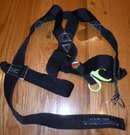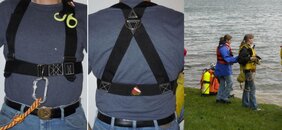We almost always dive tethered. If a diver becomes unconscious, he will let go of the end of a tether, but it won't let go of him (or her) if it is hard attached. This is particularly important in current, where an unconscious diver could be carried off before a safety diver can respond. We also have a procedure in place (and we practice it) for what to do if the tether becomes so fouled it cannot be undone in a reasonable amount of time (safety diver, also tethered, is sent to retrieve the diver). I'd rather lose a rope than a diver. If the diver needs assistance for any reason, it's a lot easier for an assisting diver (or safety diver) to find him by following the tether.
Diving with a tether does have it's challenges, but it also makes running a search pattern much easier, particularly in low visibility. One of the things that we try to avoid is sending the diver straight down from the boat on a tether. Generally, our rule of thumb is that the diver should be a vertical distance from the line tender equal to or greater than the depth he is searching/working in. This provides a shallow enough tether angle that the diver can use the line as a directional reference and keep the line off to the side when running a search pattern or working on a vehicle or rigging an object for recovery.
Now full disclosure, we do not specifically state that all diving will be tethered in our SOP, and there are a few specific instances where we do not require tethers, but our diving is predominantly in poor visibility, sometimes in current and in the winter months, under the ice. In very few instances, we have gone without a tether when we had good visibility and the safety diver can easily see us (not just our bubbles).
Working tethered is one of the few practices that has NOT been questioned on our team.





